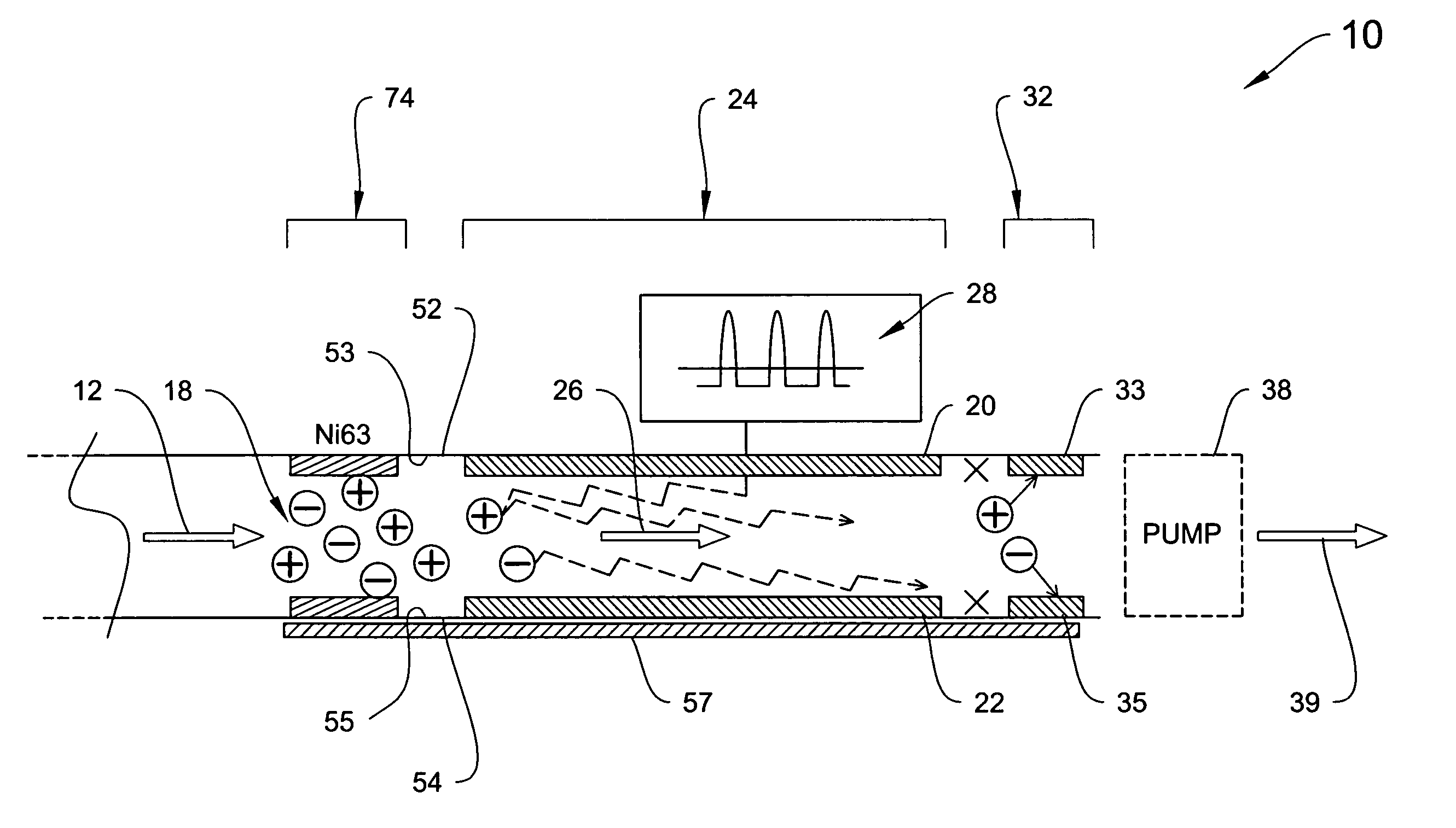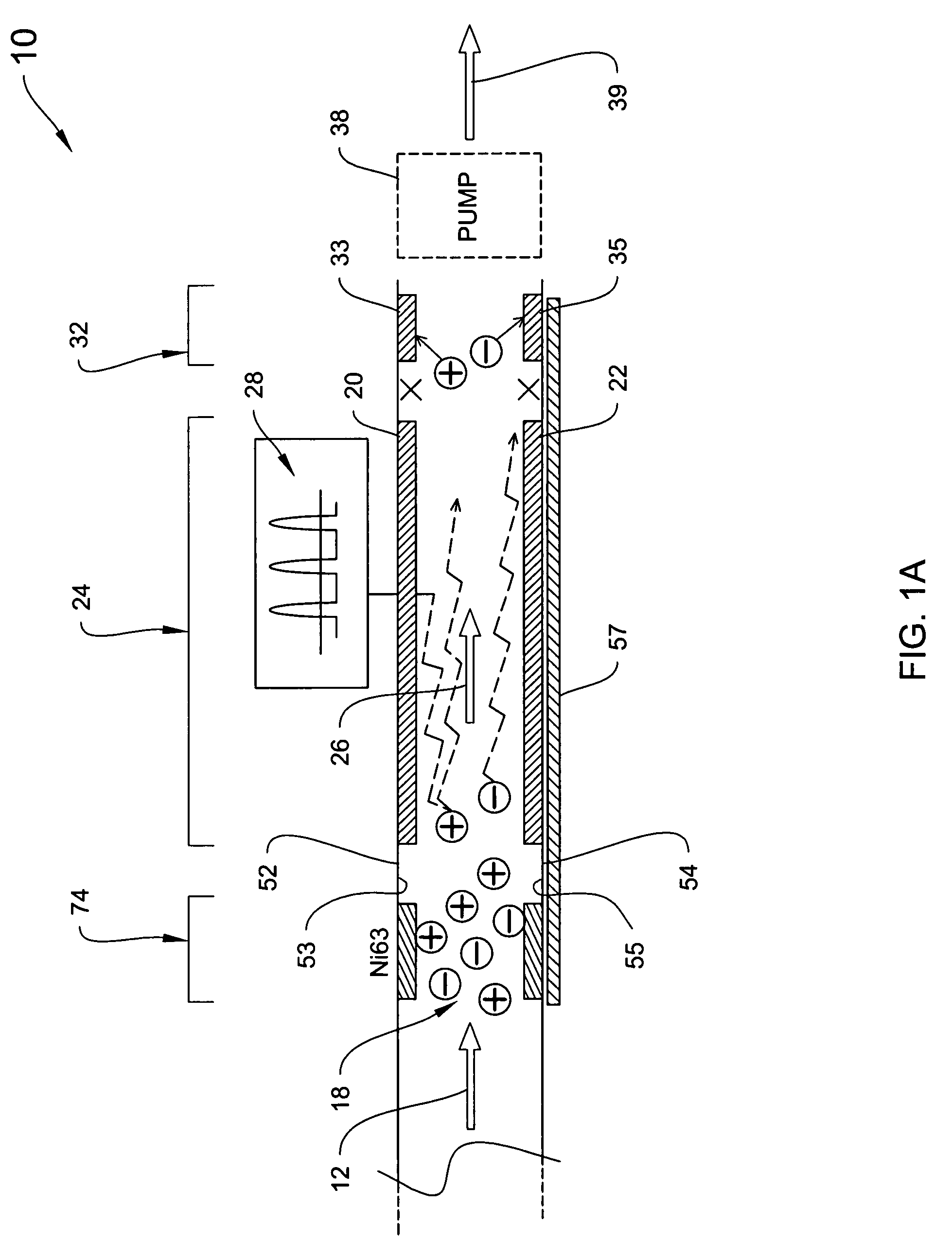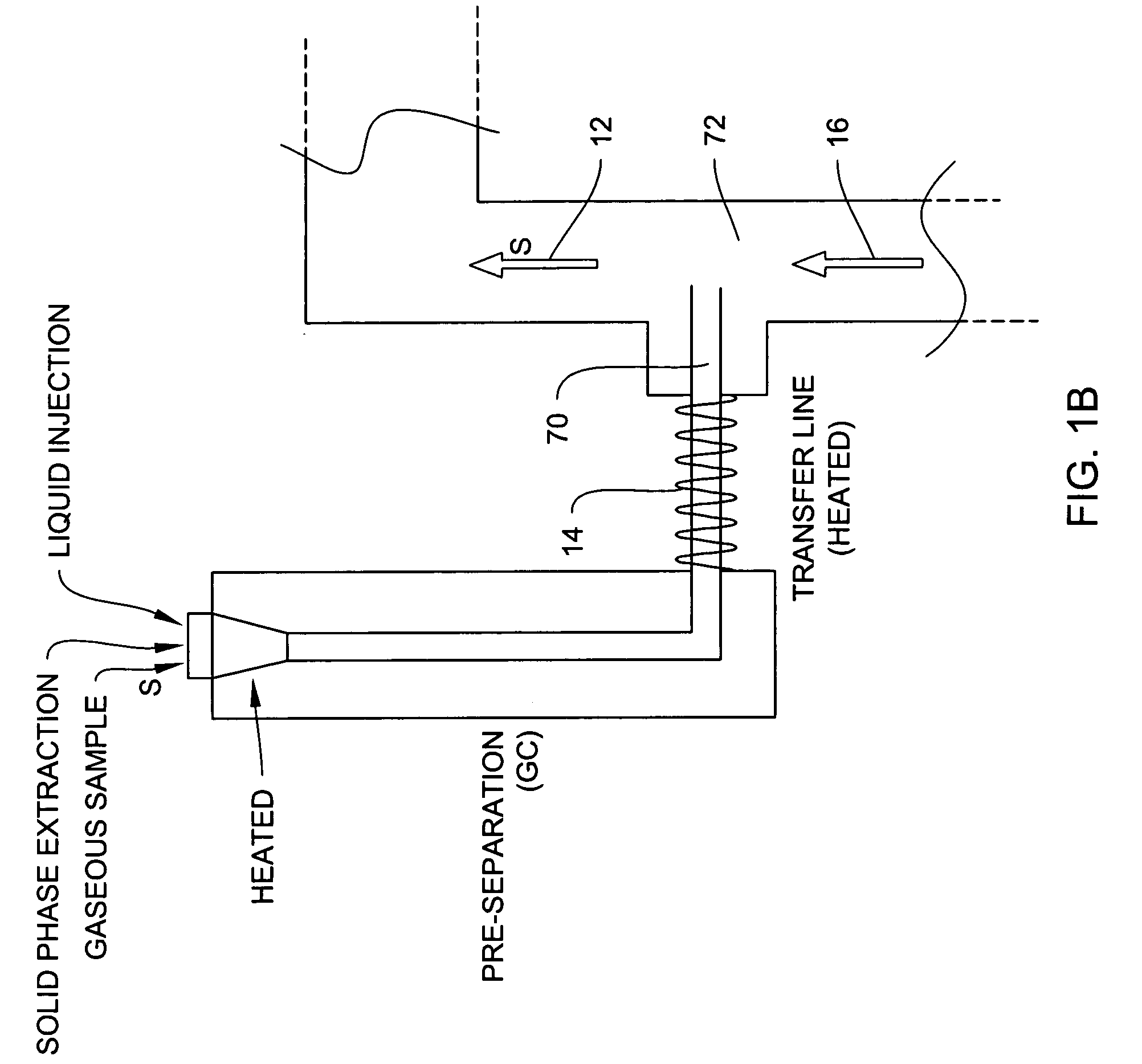Explosives detection using differential ion mobility spectrometry
a technology of differential ion mobility and ion ion, which is applied in the direction of dispersed particle separation, instruments, separation processes, etc., can solve the problems of complex support systems, large mass spectrometers, and members of the general public exposed to dangerous chemicals, so as to improve detection sensitivity, improve resolution, and enhance separation of ion species
- Summary
- Abstract
- Description
- Claims
- Application Information
AI Technical Summary
Benefits of technology
Problems solved by technology
Method used
Image
Examples
Embodiment Construction
[0047]In general, the invention is directed to systems and methods for detecting and identifying unknown constituents in chemical substances by aspects of differential ion mobility. In particular, the systems and methods described herein can be used to detect explosives-related compounds, whether explosives material per se or taggants or the like used with explosives, using DMS technology.
[0048]An illustrative DMS system of the invention is shown in FIG. 1A, which is a schematic block diagram of a DMS spectrometer 10, which operates by drawing a fluid (e.g., gas), indicated by arrow 12, via an optional pump 38 into an ionization region 18. The sample flow, e.g., a gas flow carrying an analyte(s) to be detected, is subjected to an ionization source, wherein at least the analyte is ionized although the carrier gas is normally part of the ionization process as well, for example by a radioactive 63Ni source, UV lamp, plasma source, or the like.
[0049]The ionized sample passes between ele...
PUM
| Property | Measurement | Unit |
|---|---|---|
| velocity | aaaaa | aaaaa |
| residence time | aaaaa | aaaaa |
| width | aaaaa | aaaaa |
Abstract
Description
Claims
Application Information
 Login to View More
Login to View More - R&D
- Intellectual Property
- Life Sciences
- Materials
- Tech Scout
- Unparalleled Data Quality
- Higher Quality Content
- 60% Fewer Hallucinations
Browse by: Latest US Patents, China's latest patents, Technical Efficacy Thesaurus, Application Domain, Technology Topic, Popular Technical Reports.
© 2025 PatSnap. All rights reserved.Legal|Privacy policy|Modern Slavery Act Transparency Statement|Sitemap|About US| Contact US: help@patsnap.com



